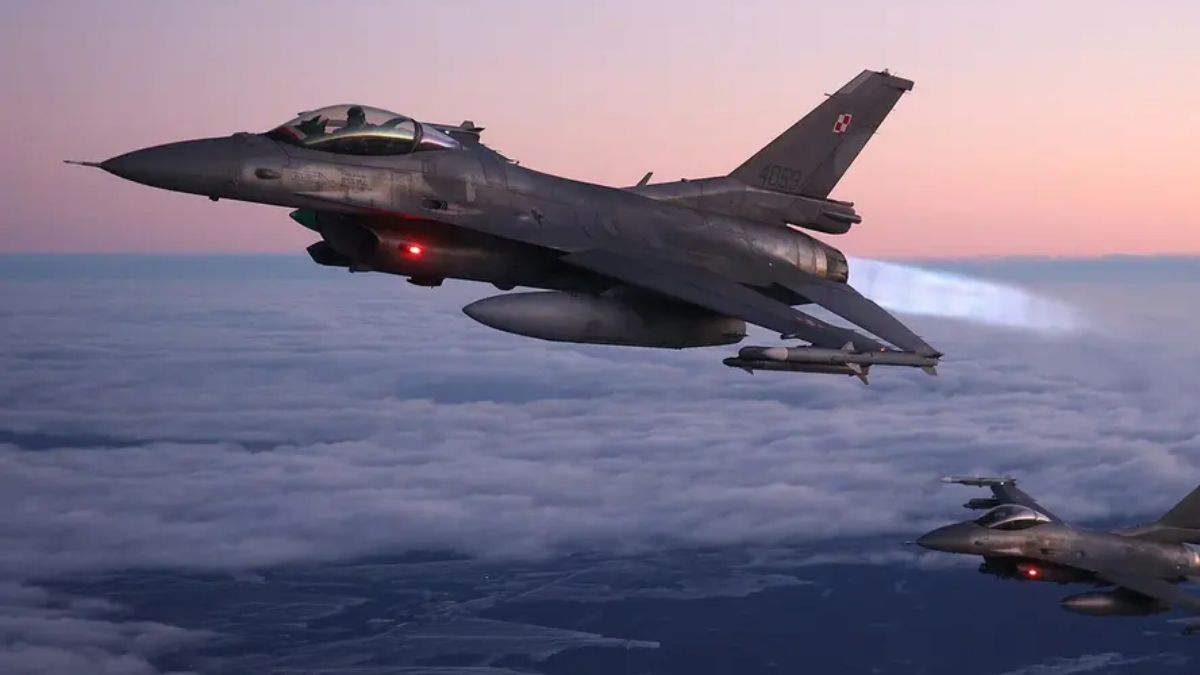Amid continuing aerial incursions across eastern Europe, Russian fighter planes and bombers entered the Alaskan air defence zone, prompting the United States and Canada to deploy fighter planes to track Russian aircraft.
Amid continuing incursions across eastern Europe, Russian fighter planes and heavy bombers on Wednesday entered the Alaskan air defence zone and the United States and Canada deployed fighter planes to track Russian aircraft.
Two Russian Tu-95 heavy bombers and two Su-35 fighter planes entered the Alaskan air defense zone on Wednesday, the joint US-Canada North American Aerospace Defense Command (Norad) said in a statement.
In response, the Norad said it deployed F-16 fighter planes, E-3 airborne early warning and control (AEW&C), and KC-135 tankers to identify and intercept Russian aircraft. It noted that Russian aircraft did not enter sovereign airspace of the United States or Canada.
“The Russian military aircraft remained in international airspace and did not enter American or Canadian sovereign airspace. This Russian activity in the Alaskan ADIZ [Air Defence Identification Zone] occurs regularly and is not seen as a threat,” the statement further said.
The ADIZ extends beyond a country’s sovereign airspace and the host country often requires identification of aircraft entering it and manages its security even though it does not exercise sovereign control in that territory.
In recent weeks, Russian fighter planes and drones have breached the airspace of several European countries, such as Poland, Estonia, and Romania. Denmark on Monday blamed Russia for drone sightings that led to the closure of the airport in country capital Copenhagen, with Prime Minister Mette Frederiksen calling it the “most serious attack so far against Danish critical infrastructure”.
In the most serious incursion, Poland said it shot down Russian drones after at least 19 drones entered its airspace on the intervening night of September 9-10.
| Country | Date(s) | Russian Aircraft Involved | Intruding Aircraft Count | Details of Incursion & Actions Taken |
|---|---|---|---|---|
| Estonia | 19 September | MiG-31 fighter jets | 3 | Three MiG-31s entered Estonian airspace over the Gulf of Finland and lingered for 12 minutes. Italian F-35s (NATO Baltic Air Policing) intercepted, escorted jets out; Estonian, Swedish, and Finnish aircraft were also scrambled. Estonia has reported four such violations in 2025. |
| Poland | 9–10 September | Unspecified drones | At least 19 | At least 19 Russian drones entered Polish airspace; Polish/NATO air assets shot some drones down. Poland invoked NATO Article 4 consultations after the incident. |
| Romania | 13 September | Unspecified drone | 1 | Romanian F-16s and German/Eurofighter jets were scrambled after a Russian drone crossed into national airspace (approx. 50 minutes); the drone left Romanian airspace and returned to Ukraine—no shootdown was attempted due to risk of collateral damage. |
| Denmark | 22–23 September | Suspected large drones (likely Russian origin) | 2–3 | Copenhagen Airport shut after 2–3 unidentified large drones violated Danish airspace, causing over 30 diverted flights. Russian involvement is suspected; incident under investigation. |
| Baltic Sea | 21 September | IL-20M reconnaissance aircraft | 1 | German and Swedish jets intercepted a Russian IL-20M reconnaissance plane over international airspace in the Baltic Sea (not a direct airspace violation, but tracked closely in context of heightened tensions). |
In multiple cases, Nato allies like Germany and Italy joined host countries in tackling intruding Russian aircraft. The United Kingdom has also deployed fighter planes to Poland to bolster Nato’s air defence capabilities in eastern Europe. However, the US Air Force has been notably absent from these missions.
The absence of US Air Force from Nato air defence missions in Europe and the downplaying of Russian incursion in ADIZ has come at a time when US President Donald Trump has indicated that the US commitment to the collective defence principle of Nato is no longer assured.
Moreover, Trump has also been friendly with Vladimir Putin and has refused to take any action so far to punish or deter Russian aggression even as the Russian leader has rejected all offers of talks and ceasefire proposals regarding the war in Ukraine.
End of Article

)
)
